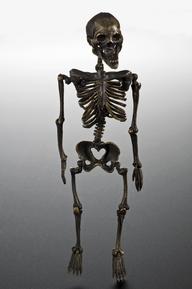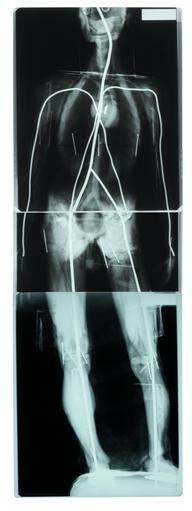





Plaster model of a sectioned human eye, French, 1884.
This larger than life-size plaster human eye model has been dissected to show the underlying structures. The glass oval represents the vitreous humour (the jelly-like part of the eye), and the white structure from the back of the globe is the optic nerve which carries messages to the brain.
Made by Louis Thomas Jérôme Auzoux (1797-1880), a physician and model maker, the eye was probably used when teaching medical students. Unlike the human body, models do not decay and can be large enough to pick out specific features and structures.
Details
- Category:
- Anatomy & Pathology
- Collection:
- Sir Henry Wellcome's Museum Collection
- Object Number:
- A661185
- Measurements:
-
overall: 290 mm x 123 mm x 390 mm, 2.2kg
- type:
- eye anatomical model
- credit:
- Wellcome Trust




